Val d’Orcia: villages to visit and other places to see
Today I’ll suggest an itinerary for a journey through the towns and villages of Val d’Orcia. The area’s undulating hills and contrasting colors, bordered by cypresses and dotted with quaint farmhouses, has given it standing in the collective imagination as the archetype of the Tuscan landscape. This privileged status is entirely deserved – the valley on the Tuscany-Umbria border is incredibily beautiful. The thousands of tourists who visit from all over the world thankfully do not detract from the peace and authenticity of the region.
Towns and Villages to visit in Val d’Orcia
Val d’Orcia is a small universe of its own, best discovered on a slow, calm pace, sipping at its little pleasures as you go in the way one should savor a glass of good red wine. You should really give it three days at least, allowing for the tenancy of time to pleasantly dissolve in the valley.
You can stay in one of the many beautiful country villas or agriturismo in the area, and spending the days exploring different villages and places by car. My favorite one is Villa Svetoni Wine Resort, a wonderful country villa in Montepulciano, with a pool and a spa. The highlight is the ancient cellar, where you can taste their own, awarded, wine.
Map of Val d’Orcia villages
Here is a map of the area, with all the villages of Val d’Orcia that I think you really shouldn’t miss.
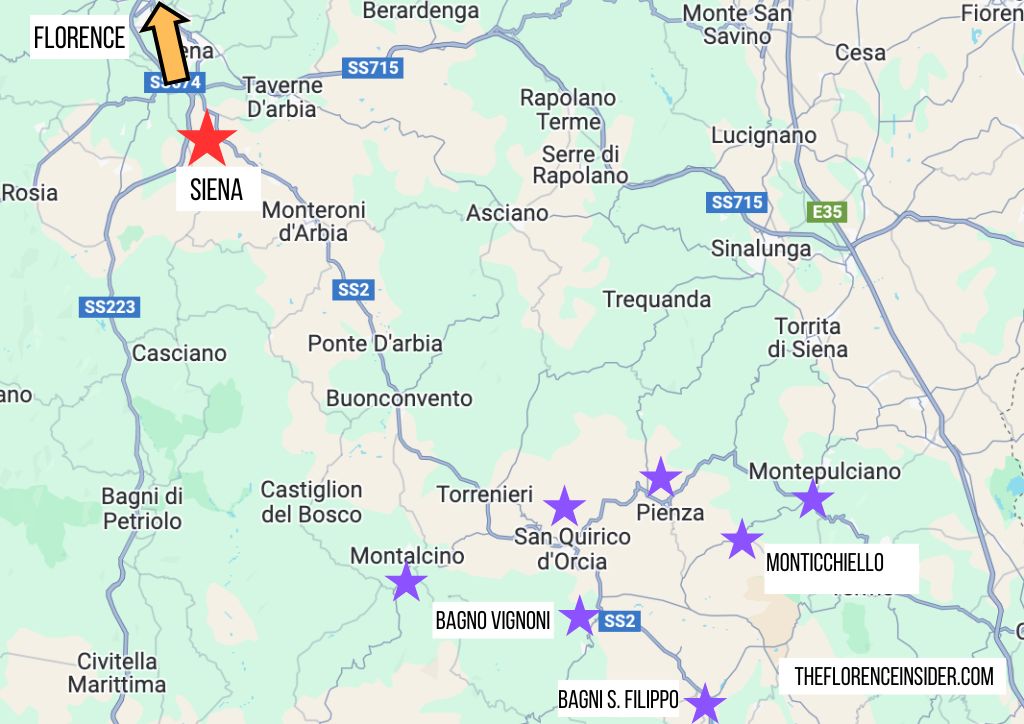
Bagno Vignoni, for the 16th-century thermal pool
In my opinion Bagno Vignoni is the most beautiful village in Val d’Orcia. It is certainly the most unique. What makes Bagno Vignoni so special is its the large 16th-century thermal spa, in the heart of the town, surrounded by ancient stone buildings and a loggia. Its name is Piazza delle Sorgenti (square of the water springs), and it’s just incredible. The loggia is what is left of the ancient church of Santa Caterina. You can’t swim into the 16th century pool in the village, but there is a 4 stars hotel with a spa facing Piazza delle Sorgenti. It’s the elegant Albergo Le Terme, housed in the Renaissance palace Palzzo del Rossellino. The spa is open to anyone, not just to the guests of the hotel. Or you can soak yourself into the nearby free hot springs.
Natural, hot water is channeled into the village, then flows from the Piazza delle Sorgenti down the hillside, forming pools and cataracts, before passing through the Parco Naturale de Mulini (Natural Park of the Mills), named after its four medieval mills that lie at short walk from the village. There, in Parco dei Mulini, there is a natural pool with the same thermal water, with free access, where you can soak yourself into the hot, blueish, milky water. The free hot spring lies at a walking distance from the village, at the foot of the hill.
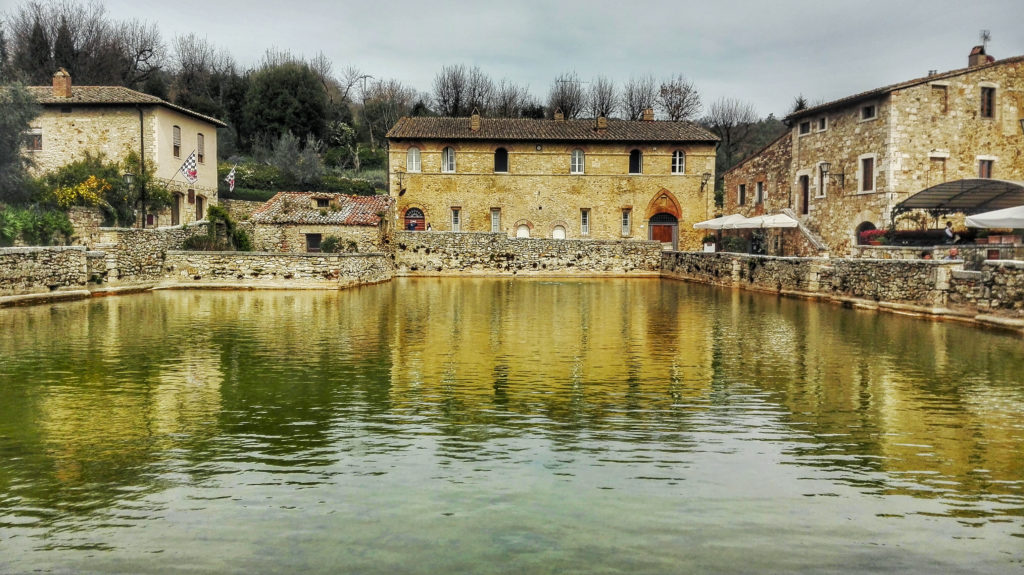
Montalcino, for the Brunello wine
Though it is certainly a charming village, Montalcino is above all a town of its wine, of which Brunello di Montalcino is the best-known but by no means only top-class example. Relax at a table of a café in the main piazza, with centuries-worth of tradition in your glass.
Don’t drink too much wine, because you will want to be still able to walk around such a Tuscan gem! Stone walls from the 13th century are still surrounding Montalcino, and you will enter the village passing through one of six ancient doors of the walls. Its medieval fortress is very impressive, and with a 4 euro ticket you can walk on the patrol walkaway on the top of its walls. The Palazzo dei Priori, built in the 13th century, is still used today as the town hall, but you can enter the building to see the courtyard, with dozens of coats of arms from the past. The palace is facing the beautiful loggia.
There are many medieval churches in town, some of the most beautiful ones are the churches of Sant’Egidio, Santa Croce and Sant’Agostino. In the cloyster of Sant’Agostino there is also a small but interesting museum with artworks and findings from the Medieval and Renaissance eras. If you like gothic architecture do not miss the wonderful Abbey of Sant‘Antimo, a few miles away from Montalcino, in the hamlet of Castelnuovo Abate.
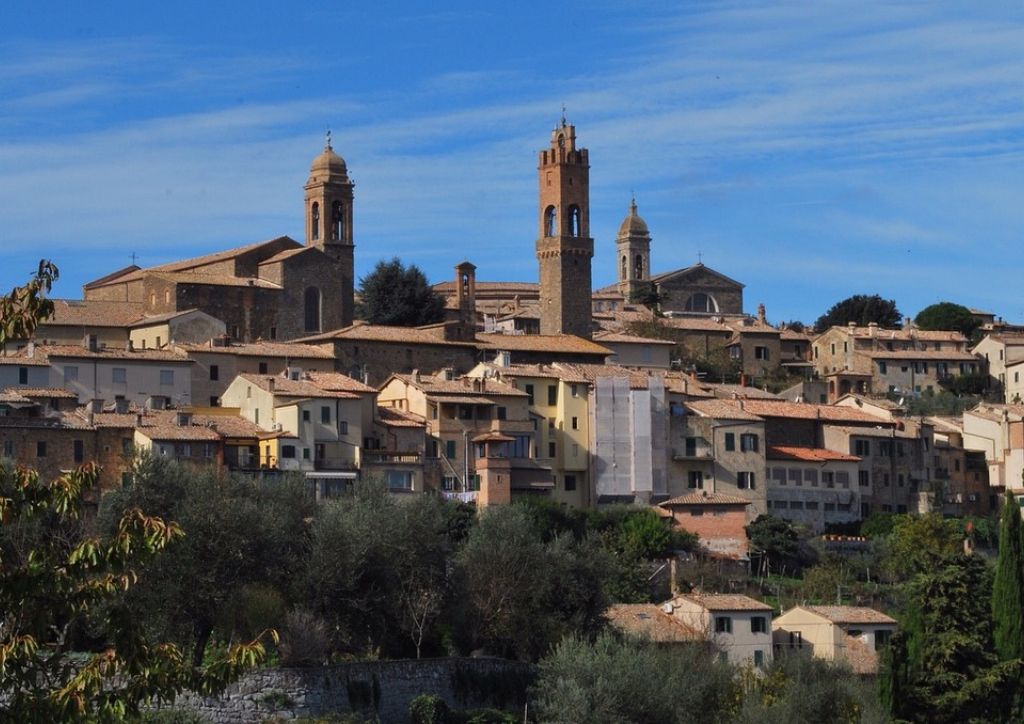
Montepulciano, for tuscan food (and more great wine)
This small hamlet is a gem of renaissance architecture harmoniously centered around the Piazza Grande and dominated by the Michelozzo-designed palace. But the village is mostly famous for its superb red wines: Vino Nobile di Montepulciano and Rosso di Montepulciano. The best way to enjoy those great wines is doing a wine tasting experience in one of the ancient underground cellars of the Renaissance palaces of the town. Those cellars were carved centuries ago into the soft, tuff stone, and covered with brick vaulted ceilings. Some of the most beautiful and important cellars that you can visit are Cantine Ercolani, Cantina Dei and Fattoria Talosa. In particular I recommend Cantina de ‘Ricci, a wine-lovers paradise, a cellar housed in the romantic majesty of a former romanesque cathedral. It is unsurprising that many people consider this the most beautiful winery in the world.
I also recommend dining at Osteria Acquacheta, which serves up some of the world’s best steaks, as well as other fantastic Tuscan dishes and its own home-made wine. Steak is a staple of Tuscan cuisine in general, and specifically of the Florentine one: learn more about the famous Florentine Steak of Florence.

Pienza, for the dream of Reinaissance
What is now Pienza was once Corsignano, a tiny settlement of no repute. But its fate took a remarkable turn when one of its citizens, Enea Piccolomini, became Pope Pius II. He was one of the most cultured men of his time, who studied the ancient roman and greek literature, and who truly embraced the spirit of the Renaissance. Enea, or Pius II, initiated the village’s transformation according to Renaissance ideals of urban perfection. The resulting village is small in size but great in charm, displaying all the elegance and harmony of proportions of the Tuscan Renaissance. Recognition of its beauty resulted in its being awarded status as a UNESCO World Heritage Site. This turned Pienza into one of the most visited villages not just in Val d’Orcia, but in the whole Tuscany. It can be really crowded in summer and spring weekends. But it totally worth the trip.
The wonderful Piazza Pio II was designed by an architect with the help of an astronomer: every year, at noon on the summer solstice and the spring equinox, the shadow of the church is perfectly perpendicular to the square. The two most important buildings overlook Piazza Pio II: the Palazzo Comunale (designed by Bernardo Rossellino), which still houses the town hall (enter the internal courtyard to see the stone coats of arms), and Palazzo Borgia, housing an interesting museum inside, with medieval and Renaissance works of art.
Don’t forget to visit Palazzo Piccolomini, built again by Bernardo Rossellino as a summer residence for Pope Pius II, it’s a magnificent Renaissance palace with a hanging garden on the top floor for a gorgeous view over the Valdorcia valley. Finally, I would like to point out the ancient Gothic church of San Francesco, which still preserves frescoes, sculptures and other decorations from the Middle Ages. The cloyster of the church of San Francesco today is housing an elegant luxury hotel, the Relais Chiostro di Pienza.
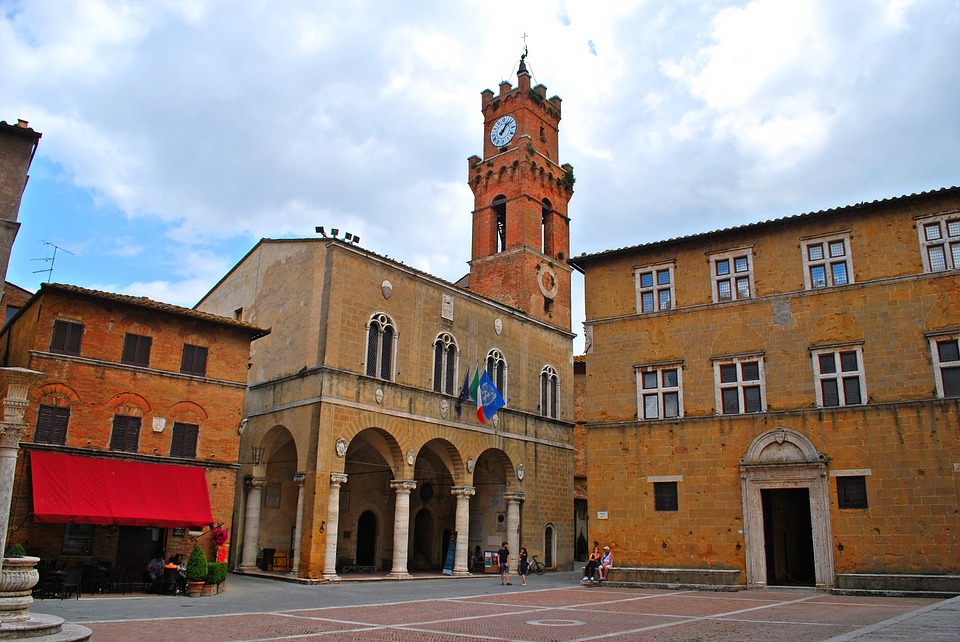
EXTRA TIP: the final scene of the movie The Gladiator with Russel Crowe was filmed just outside Pienza! It’s the one in which the protagonist, after being stabbed to death, meets his son and wife again, in the middle of the Italian countryside. To see this location, first reach the Pieve di Carignano church, just outside the village walls. Then from here take the dirt road that goes down towards the fields, and you will soon recognize the place.
San Quirico d’Orcia, for its extra virgin olive oil
Another small hamlet boasting a rich history, San Quirico d’Orcia has remained largely unchanged over the centuries, even as its commercial importance has diminished since its days at the crossroads of several trade-routes which brought people, goods, and ideas. Don’t miss out on visiting Palazzo Chigi Zandodari, a magnificent baroque palace, with frescoed ceilings from the 17th century. And then one of my favorite places, the Horti Leonini, one of the most beautiful examples of Renaissance Italian gardens, created in the 16th century.
The village produces some of the world’s best extra-virgin olive oil, which it celebrates at its annual Oil Festival. Ristorante Trattoria Osenna serves some of Tuscany’s best traditional regional food, notably its home-made pasta.
EXTRA TIP: Stop between Pienza and San Quirico d’Orcia to see the Vitaleta chapel. You may be unfamiliar with the name, but you will almost certainly have seen it in photos; this church atop a hill is a true icon of Tuscany. It’s the perfect picture of the Tuscan countryside: a tiny white church, surrounded by cypresses, laying in the rolling hills.
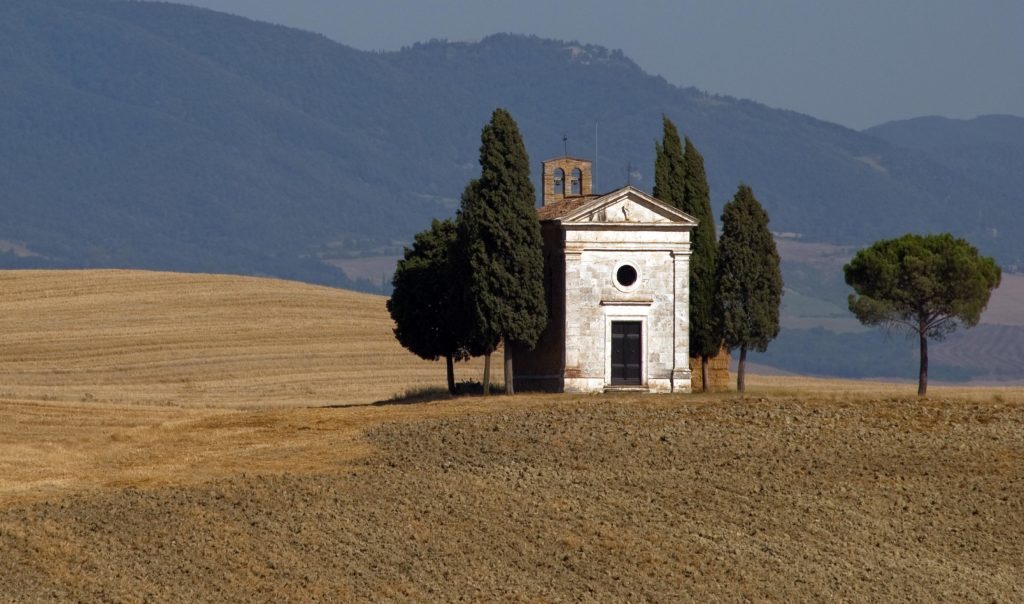
More natural hot springs at Bagni San Filippo
Once you reach San Quirico d’Orcia, continue along the Via Cassia (SS2), pass the village of Castiglione d’Orcia, and reach the hamlet of Bagni San Filippo. More than a hamlet, it is just a handful of houses, but this place is famous for its incredible natural hot springs. The hot thermal water stream, flowing down the hill, creates an extraordinary architecture of very white limestone, with waterfalls and small natural pools, where the water takes on an unreal light blue color. In Italy this place is called La Balena Bianca, the White Whale.
The thermal hot springs of Bagni San Filippo are free and open to the public. From spring to autumn they are very popular: I recommend visiting them early in the morning on a weekday, to avoid the crowds. The water is warm enough to dip yourself even in winter, remember to bring a towel to dry yourself quickly, because outside the water it is very cold.
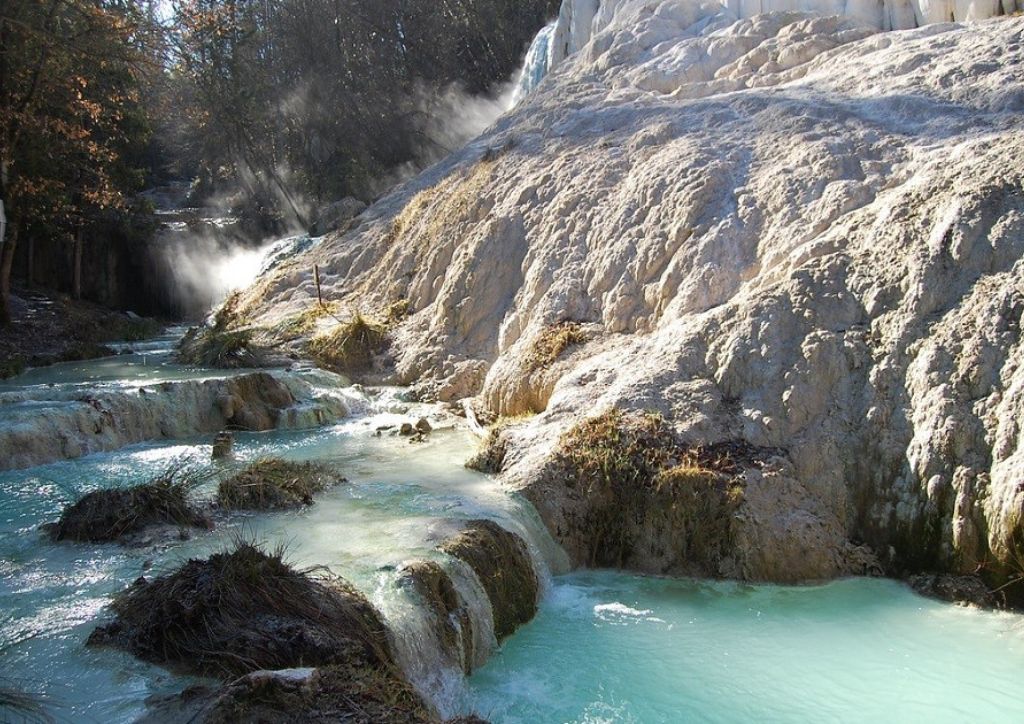
Monticchiello, for the Middle Ages
While Pienza represents the triumph of Renaissance rationality, Monticchiello is a perfect example of Medieval spontaneity. This makes it one of the most pleasant settlements to explore on foot, with each curve of its jumbled alleyways promising surprise. Walking among ancient stone walls, cobblestones roads, with no cars or scooters around… It really feels really like taking a leap in time. In Monticchiello it’s nice to wander through the alleys, encountering old stone houses with colorful flowers, 13th century churches like the church of Santi Leonardo e Cristoforo, and cute little piazzas. The ancient stone walls are still surrounding Monticchiello, interrupted by seven defensive towers. The village is dominated by what is left of its castle, a tower called Cassero Senese.
I recommend you to visit the ancient public wash houses of Monticchiello, still in operation today. Here, under a red tiles roof, for centuries the women of the village came to wash their laundry in a collective ritual now lost.
EXTRA TIP: Don’t miss the famous and beautiful winding road with cypress trees! You can take perfect pictures of this iconic landscape of Tuscany from a nearby viewpoint, it’s marked on google maps.
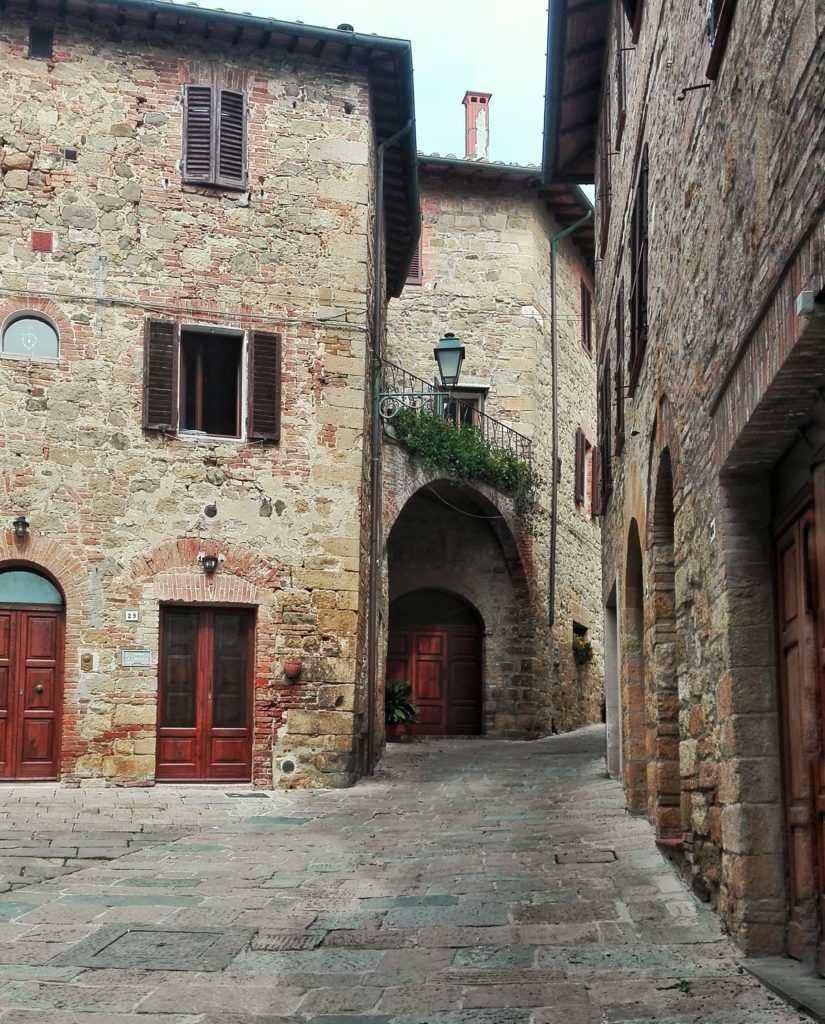
How to get to Val d’Orcia from Florence
Val d’Orcia is quite isolated from Florence, and there’s no railway reaching the valley. The closest train stations are Siena, Buonconvento and Chiusi-Chianciano Terme. But once there, you’ll have to take a bus to one of the Val d’Orcia towns, and buses are very few and unreliable. I don’t recommend that. The best way to get there is renting a car in Florence and driving there. And it’s actually the best way to discover the area, because you’ll be able to see some of the most beautiful landscapes, which are laying in between one village and another.
To go by car from Florence to Valdorcia you will have to take the Florence-Siena highway – officially called Raccordo Autostradale 3, but actually nobody calls it that, it’s commonly called Autopalio instead. It is a two-lane fast road with no toll, and unfortunately it’s one of the most dangerous roads in Italy, please be careful because too many accidents happen there every year. Take the exit Siena Sud and then follow the SS2, which is the modern evolution of the ancient roman road Via Cassia. In about 12 km you’ll be in Montalcino, the closest to Florence of the Valdorcia villages.
Alternatively, you can take a day trip tour from Florence, including transportation, lunch and a tour guide. This is a great option to visit different places in a shorter time, especially for people who don’t drive or don’t want to rent a car in Italy. Some options are:
Most scenic roads in Val d’Orcia
The beauty of Val d’Orcia is not just in its villages, it’s also in the landscape in between each one of them. Driving from one to the other is the perfect chance to travel along scenic, country roads, surrounded by the famous rolling hills of Tuscany.
The road called SP88 is one of the most iconic landscapes of Tuscany: a windy road climbing a hill, with cypress trees on its sides. You probably have seen it in postcards, and even in car commercials on TV. If you want to drive on the road point your GPS here. If you want to take the perfect picture, go the the viewpoint here.
The SS2 is the ancient roman road Via Cassia: has obviously been modified and modernized, but is still following the same route as the old Roman road. Even today most people simply call it La Cassia.
The SP146, also known as Strada Provinciale di Chianciano, is also very beautiful, full of beautiful landscapes with rolling hills, cypresses and cute little farms. It’s the one that goes from San Quirico to Pienza and then Montepulciano.
The drive along the SP323 is also very scenic. It’s a detour from the Via Cassia, in between San Quirico and Bagni San Filippo.
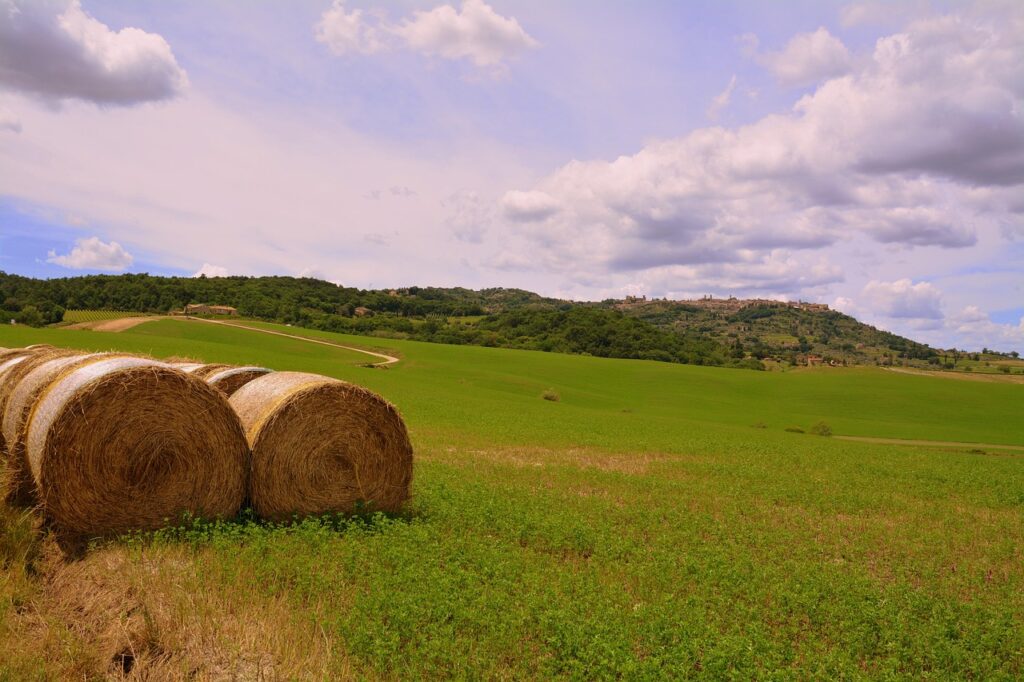
That’s it! Have you ever been to this part of Tuscany? Which of the villages of Val d’Orcia is your favorite? Tell me about your experiences in a comment! If you are looking for more inspiration, you can find here tons of others ideas for a day trip from Florence.
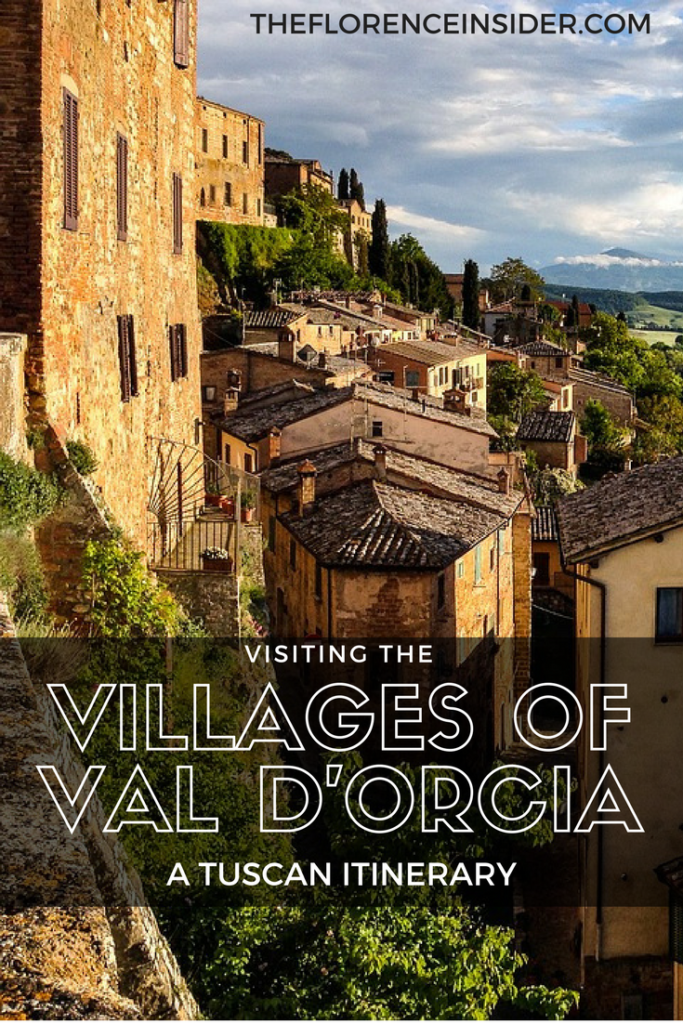
Certamente Pienza è il mio paese preferito di tutti questi! Io la chiamo “la capitale del mio cuore”
Pienza is lovely!
Wondering if it is safe to wade in the hot springs at Bagno Vignoni?
yes it’s quite safe, the biggest risk is slippering